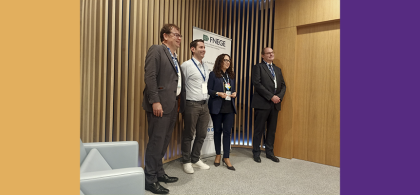
NEOMA’s world
5 levers to make multicultural skills a competitive advantage
It is commonly assumed that multiculturals – i.e., individuals with more than one cultural identity – with their particular skills, contribute to the success of multinational enterprises (MNEs). But how to make it a strategic human capital resource? Hae-Jung Hong, NEOMA BS and Dana Minbaeva, Copenhagen Business School, give insights on how to create the good conditions and achieve global competitive advantage.
Multicultural’s KSAOs for multinational enterprises
Multiculturals are individuals with knowledge of, identification with, and internalisation of, more than one culture. By working and living with culturally different people, they have developed unique knowledge, skills, abilities, and other characteristics (KSAOs).
In the context of strategic development on emerging markets, multinational enterprises (MNEs) must manage growing pressures for local adaptation and global responsiveness, and the increasing dispersion of required competencies.
Thus, the number of multiculturals in their workforce will obviously increase. They can bring a great competitive advantage to MNEs!
However, an MNE’s competitive advantage is not the employment of multiculturals per se, but rather the MNE’s ability to transform multiculturals’ KSAOs into strategic human capital resources by creating complementarities between KSAOs and emergence-enabling factors.
The “emergence-enabling factors” are:
- A global mindset
- A differentiated HR architecture
- The language policy and practices
- Team diversity
- Multicultural team leadership
How to use multicultural skills in MNEs?
Multiculturals prove an ability to bridge culture gaps, and a capacity to integrate and transfer knowledge from around the world. We pointed out to five main KSAOs and their consequences or applications in multinational enterprises:
- Cultural frame switching contributes to knowledge transfer, boundary spanning and cross-cultural collaboration.
- Cultural adaptability contributes to global leadership, cross-cultural conflict resolution and multicultural team effectiveness.
- Culture-based creativity contributes to new product/project development, innovation and problem solving.
- Cross-cultural communication skills contribute to knowledge transfer, boundary spanning, multicultural team effectiveness an cross-cultural collaboration
- Cross-cultural attributional complexity contributes to multicultural team effectiveness and global leadership
How to activate emergence-enabling factors in organisations?
Multiculturals have the potential to be a rich resource for the exploration of culturally diverse environments in which MNEs operate. But they need an enabling working environment. Complementarities must be created within the MNEs between multiculturals’ KSAOs and emergence enabling- factors.
Global mindset
A global mindset can be defined as the ability to ensure personal and business performance by adjusting to different environments and cultures. It implies absorbing information, traditions, and cultural norms from different countries.
Possible actions: openness towards multiculturals and recognition of their contribution.
Differenciated HR architecture
MNEs should establish explicit HR practices for the multicultural workforce that differ from their core HR architecture. As most HR practices are designed to treat everyone equally, this might require new ways of thinking about employee management.
Possible actions: design a dedicated HR manager to manage multicultural employees, handle career development and train monoculturals and multiculturals to work together.
Language policy and practices
MNEs need to make their language policies flexible and responsive to the needs of the global market. Our respondents did not express a preference for English as such. Instead, they stressed the importance of explicitly supporting multilingualism as a fundamental part of daily operations.
Possible actions: working language at HQ and bringing multiculturals to HQs.
Team diversity and Multicultural leadership
We also believe that high team diversity (variety) and the quality of the immediate leaders are the most decisive emergence- enabling factors for the retention of multiculturals. These processes relate to team dynamics and to the multicultural qualities of leaders. To ensure the positive impact of multiculturals, MNEs need to develop their immediate leaders.
Possible actions: composing team members by their cultural diversity; effective managing (adapting and adjusting) multiculturalism and skills to lead multicultural teams; mediating cross-cultural conflicts and misunderstanding.
We think our framework of emergence-enabling factors can guide practitioners wishing to more effectively manage a multicultural workforce. And thus create the conditions of multiculturals workforce becoming a competitive advantage.
Learn more
To explore those factors, we conducted a two years field study in two MNEs: a leading fast-moving consumer goods company and a leading auditing and business-consulting company. Detailed findings and analysis, and bibliographical references are available in the research article:
Hong, HJ., Minbaeva, D. Multiculturals as strategic human capital resources in multinational enterprises. Journal of International Business Studies (2021). https://doi.org/10.1057/s41267-021-00463-w



